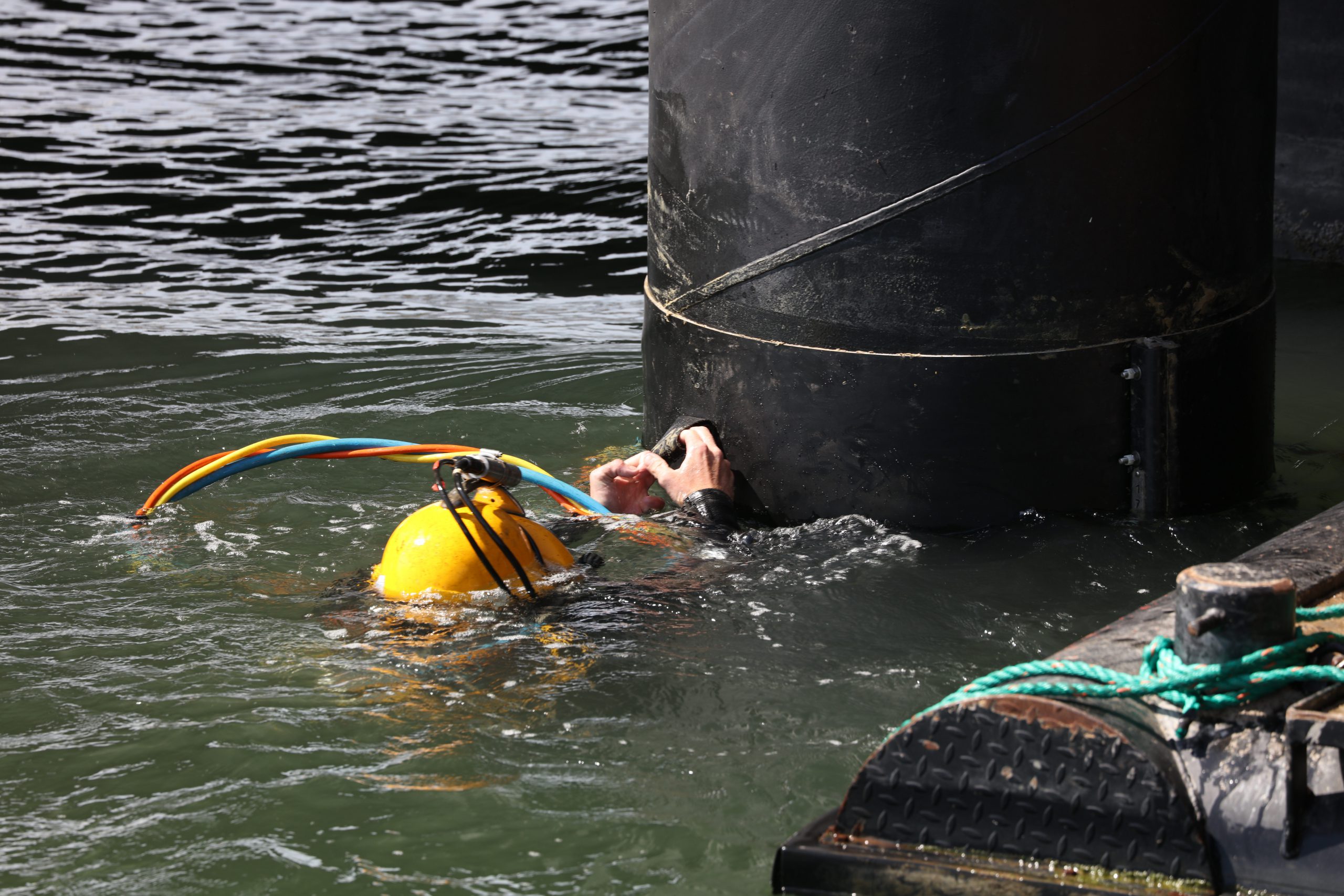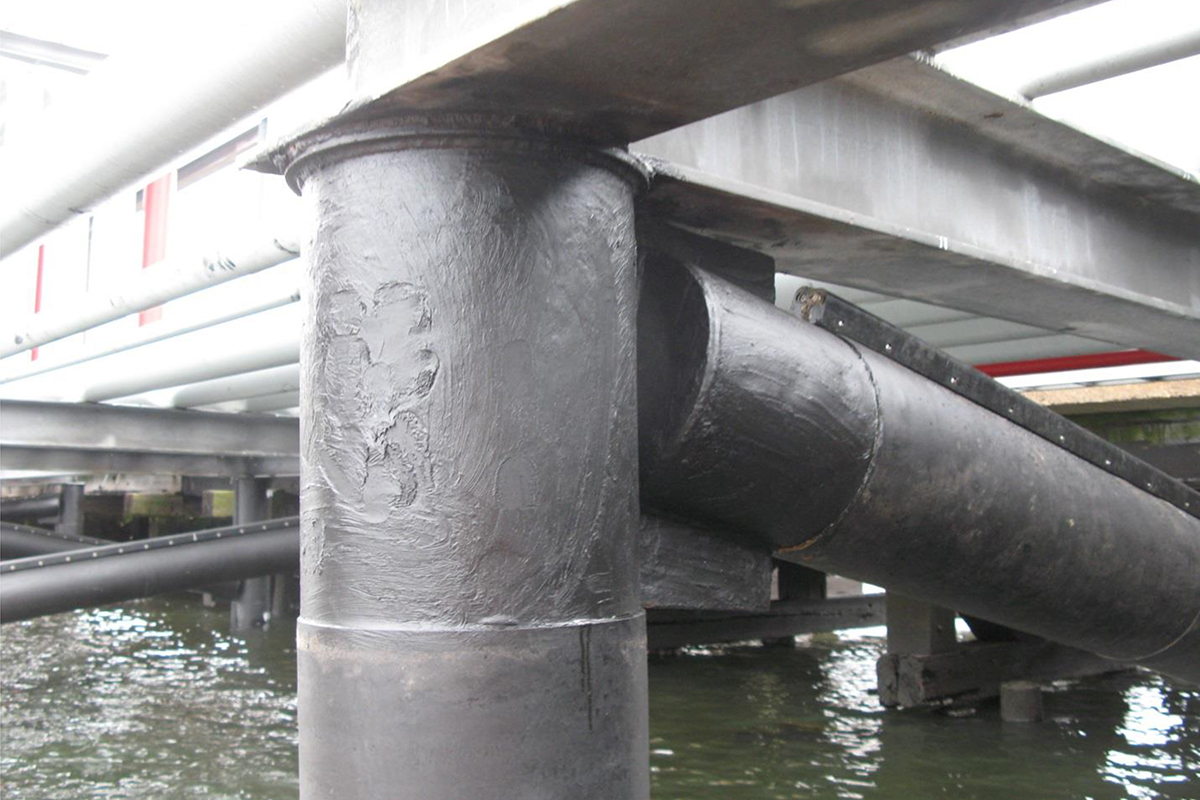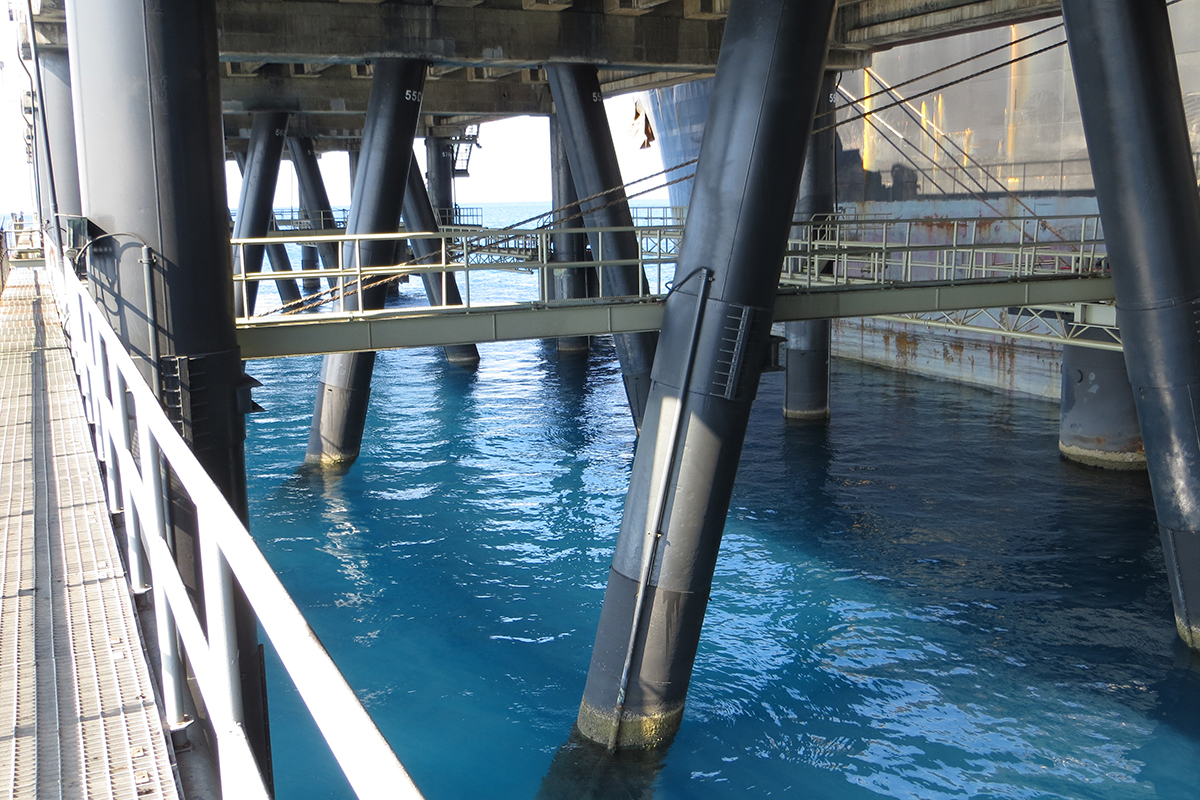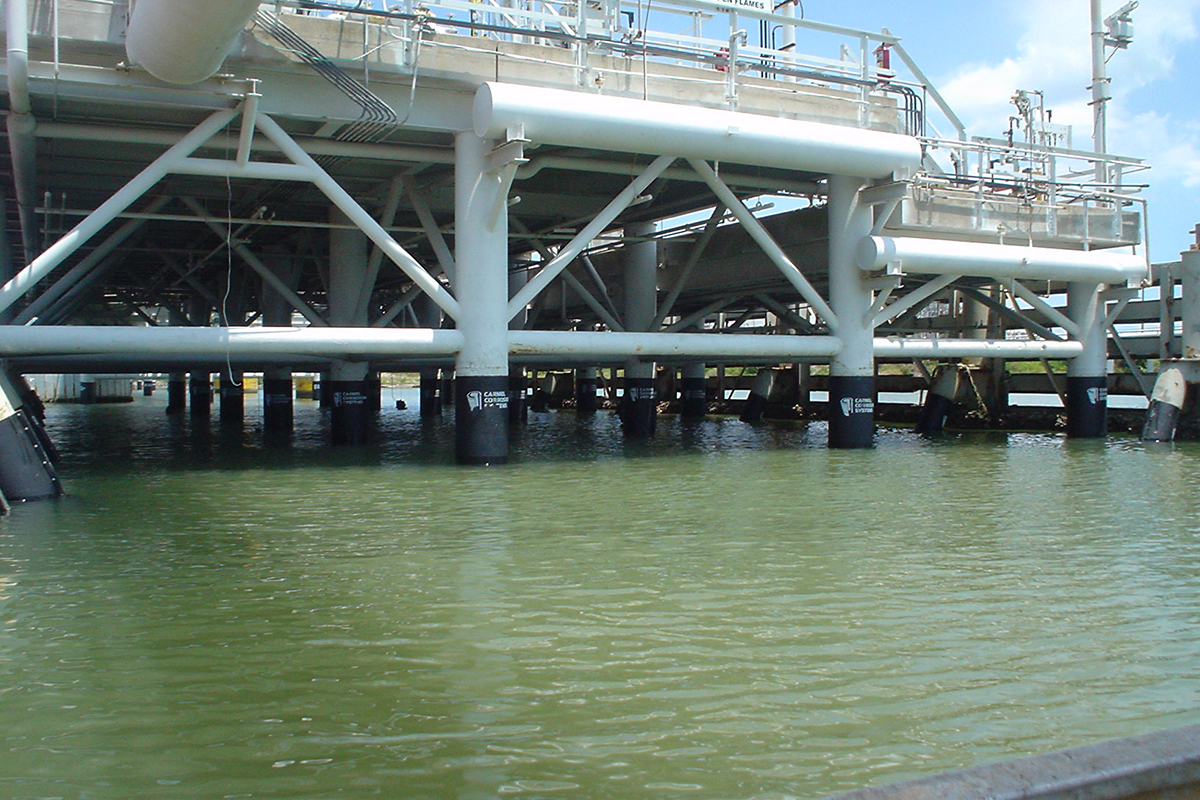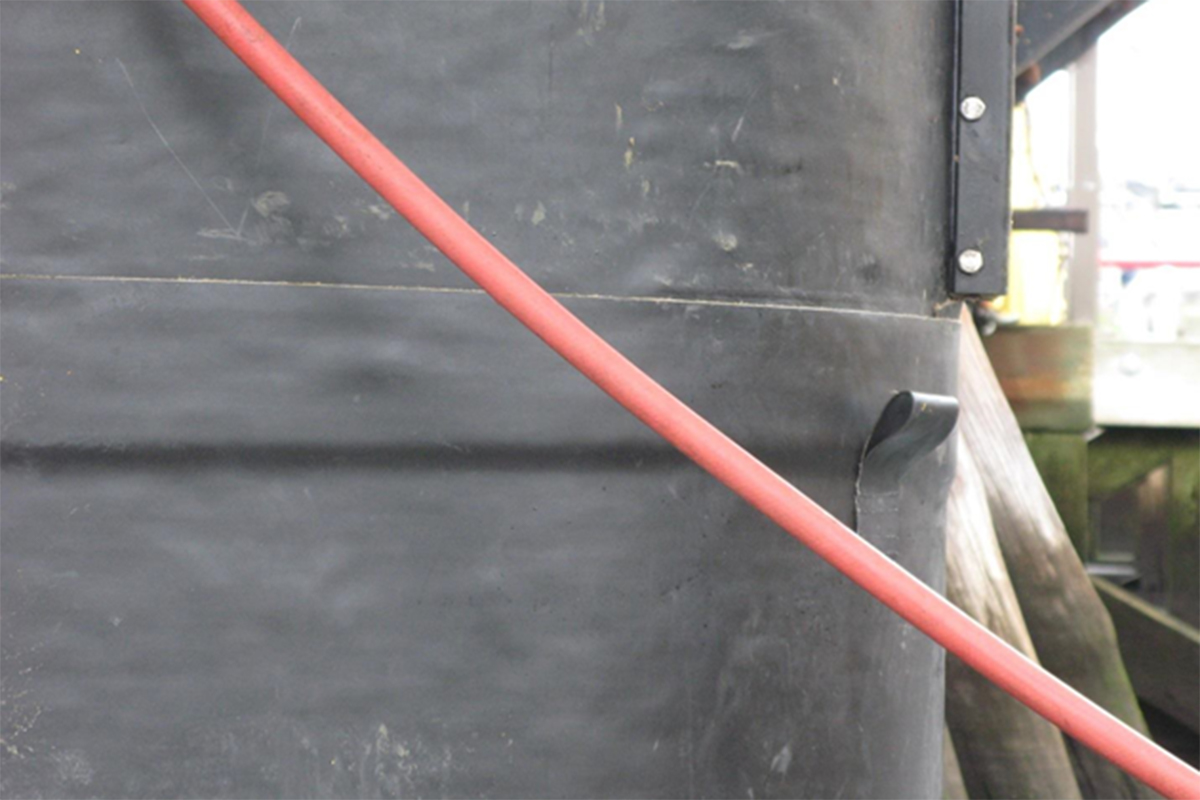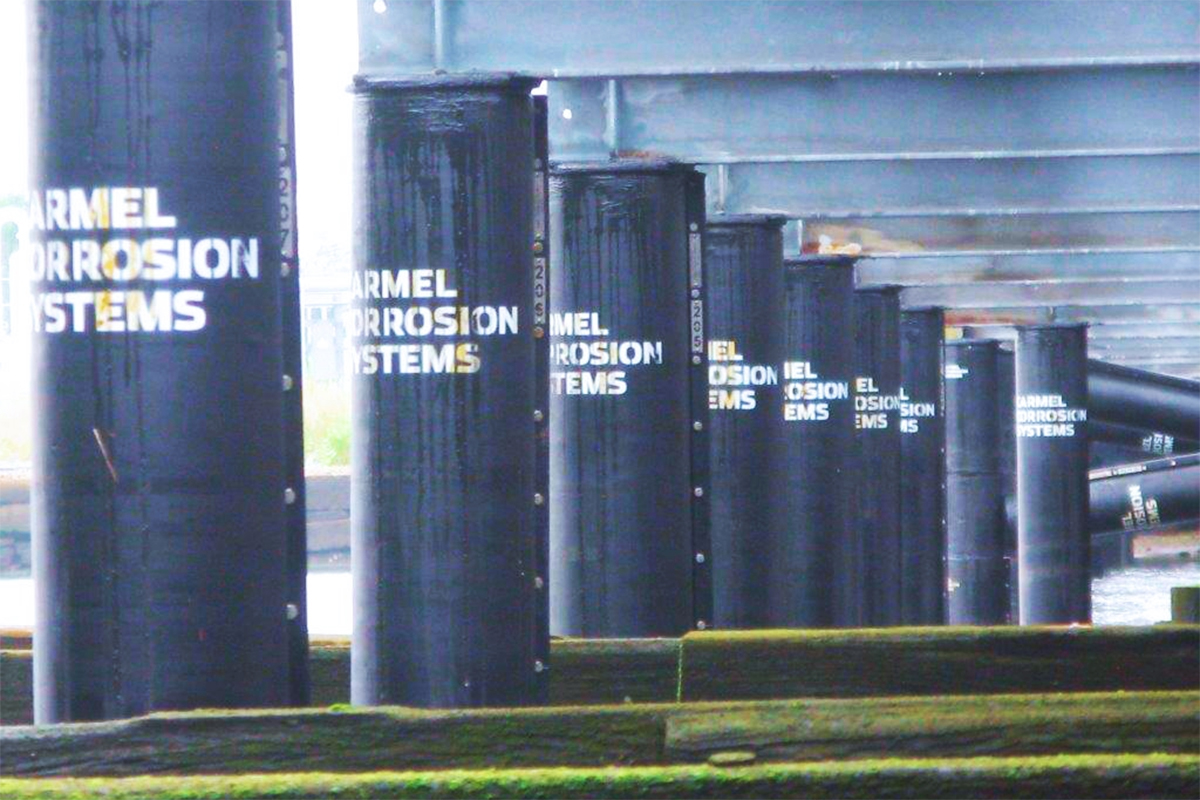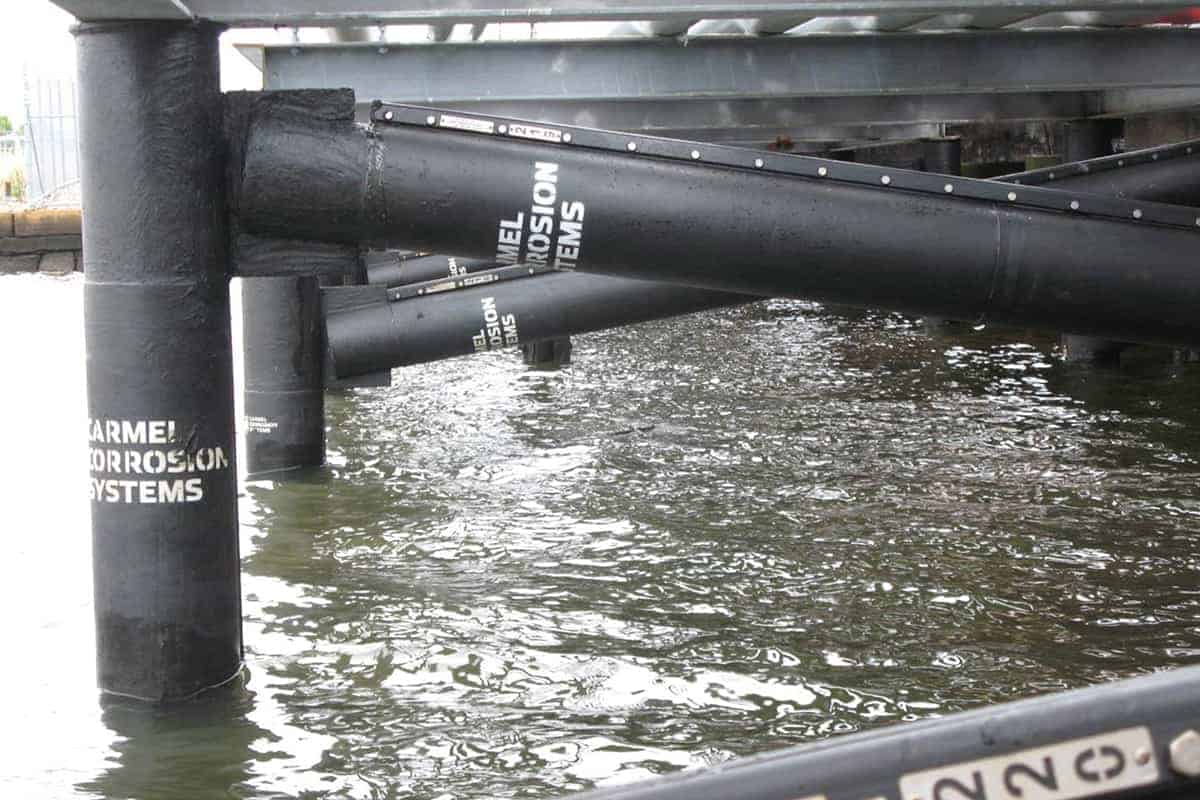SPLASH ZONE CORROSION
When talking about splash zones in the area of offshore constructions, like risers and jetties, this zone is the area where the external surfaces of the construction is periodically in and out of the water. The determination of the splash zone includes evaluation of all relevant effects including influence of waves, tidal variations, settlements, subsidence and vertical motions.
From all zones (atmospheric, tidal, submerged and the subsoil) covering the steel structures or piles, the splash zone has the highest corrosion rates. This is due to the high oxygen and chloride content of the recurrent splashing of seawater, which destroys any protective film that might be formed on the steel surface.
In other words the splash zone is the area of the structure where the risks of corrosion issue may rise at first because
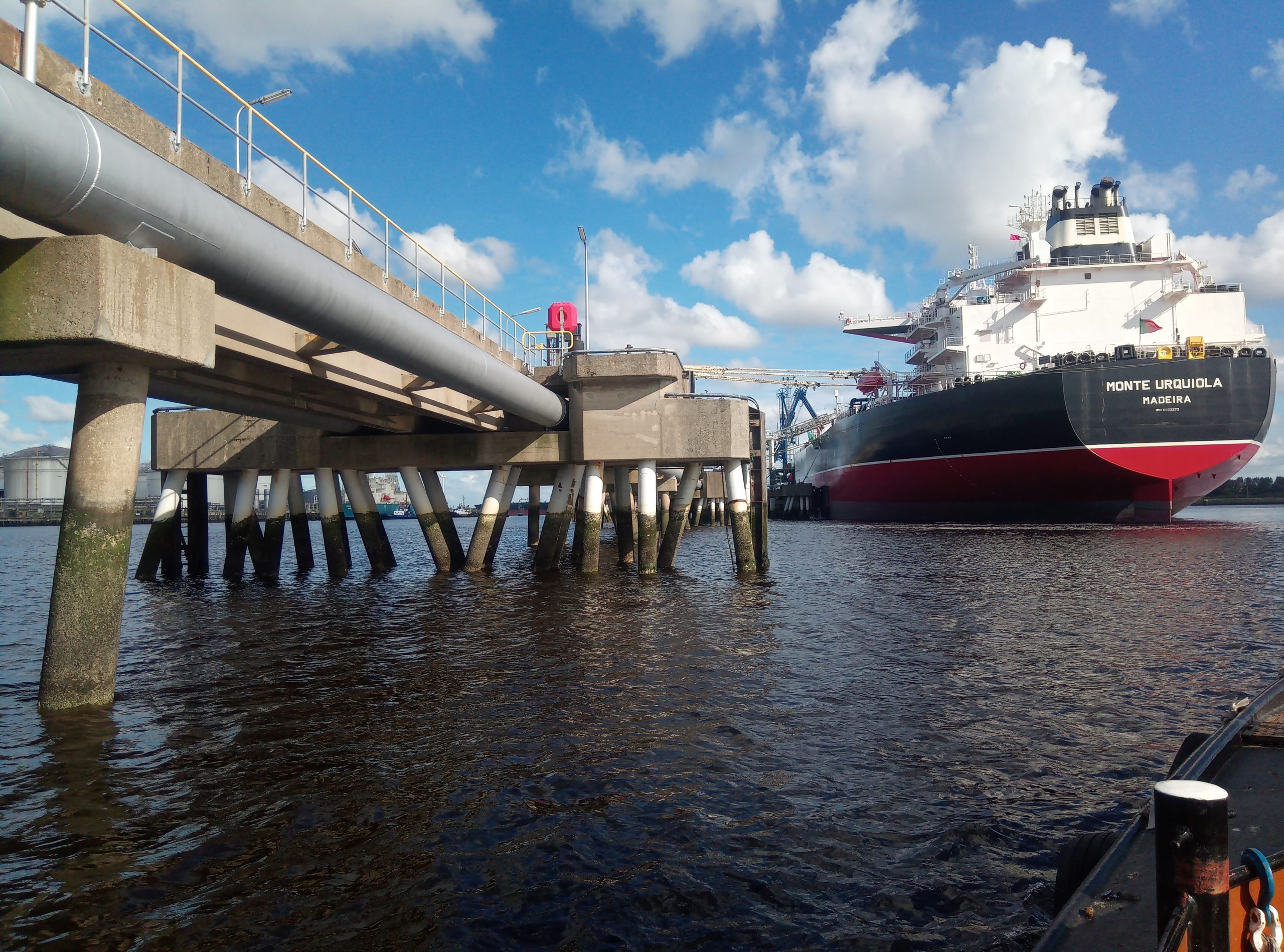
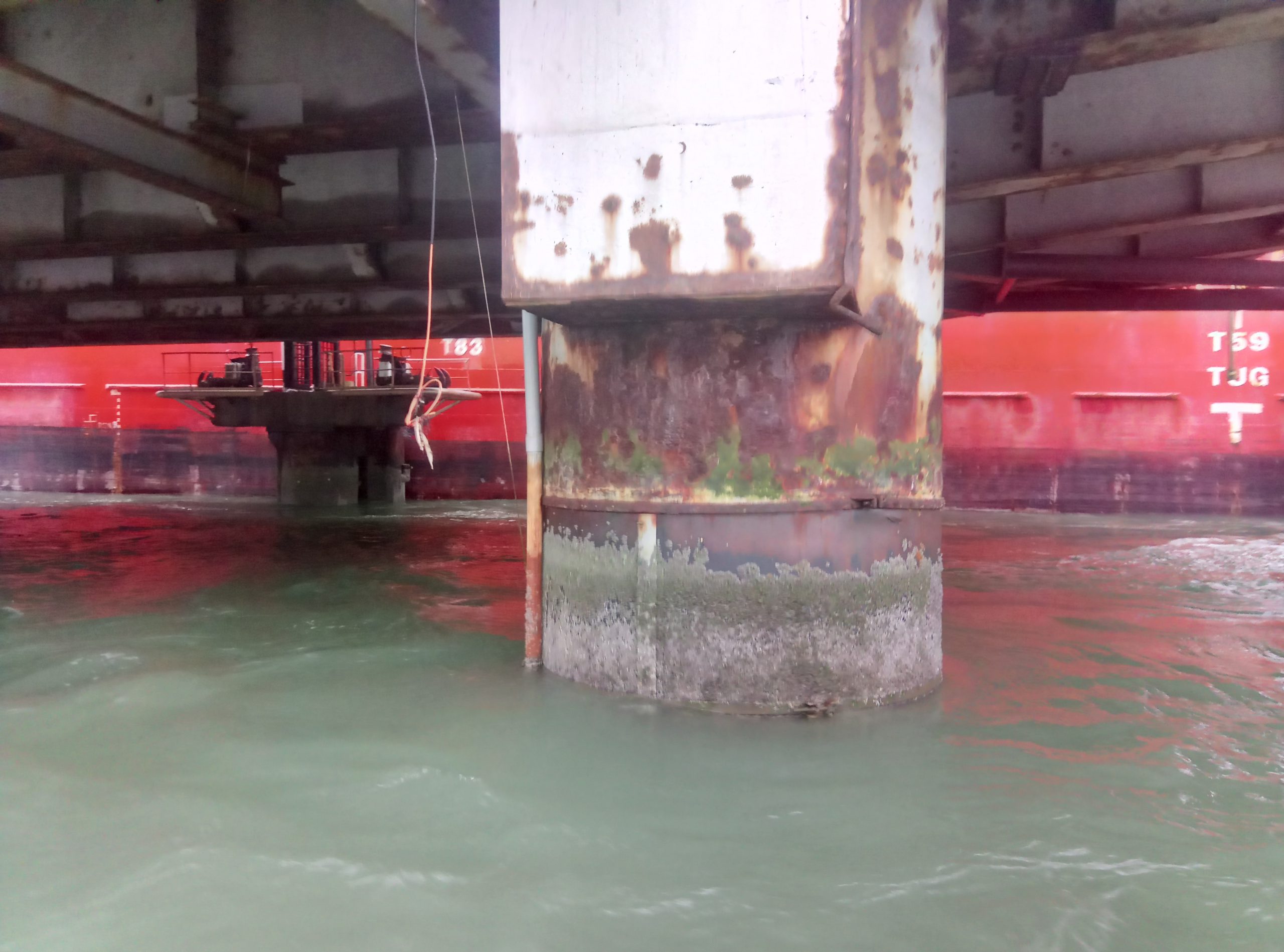
Causes
The splash zone is the most vulnerable part of a offshore marine construction. These constructions are 24/7 threatened to extreme forces by waves, tidal changes, salt water and sunlight. The ideal conditions for electrochemical reactions that causes corrosion on these structures.
To protect these structures against corrosion you need to seal them from these environments with a protective skin. Before these structures are placed they have been treated on land with a special coating. But what if you need to maintain the structure during its lifetime in the middle of an ocean?
Tape solutions
To prevent splash zone corrosion impact on steel pipes for offshore structures and jetties the structures are coated before installment. During their lifetime and depending on the local conditions these structures need maintenance to extend their lifetime. As it is very difficult and costly to paint under water this means more advanced solutions are needed.
In many cases petrolatum jelly with some corrosion-inhibiters are used. Petrolatum is water-repellent and very sticky, and it relatively easy to apply to the steel structures and piles. There are many solutions on the market, based on pre-impregnated (petrolatum) tape. In this solution divers will wrap the tape around the structures. This is very time consuming but it is also difficult to maintain the tension and overlap dimensions. But applying petrolatum tape alone, is not sufficient as it lacks the mechanical protection needed (waves, weather, floating debris and boat collisions etc.).
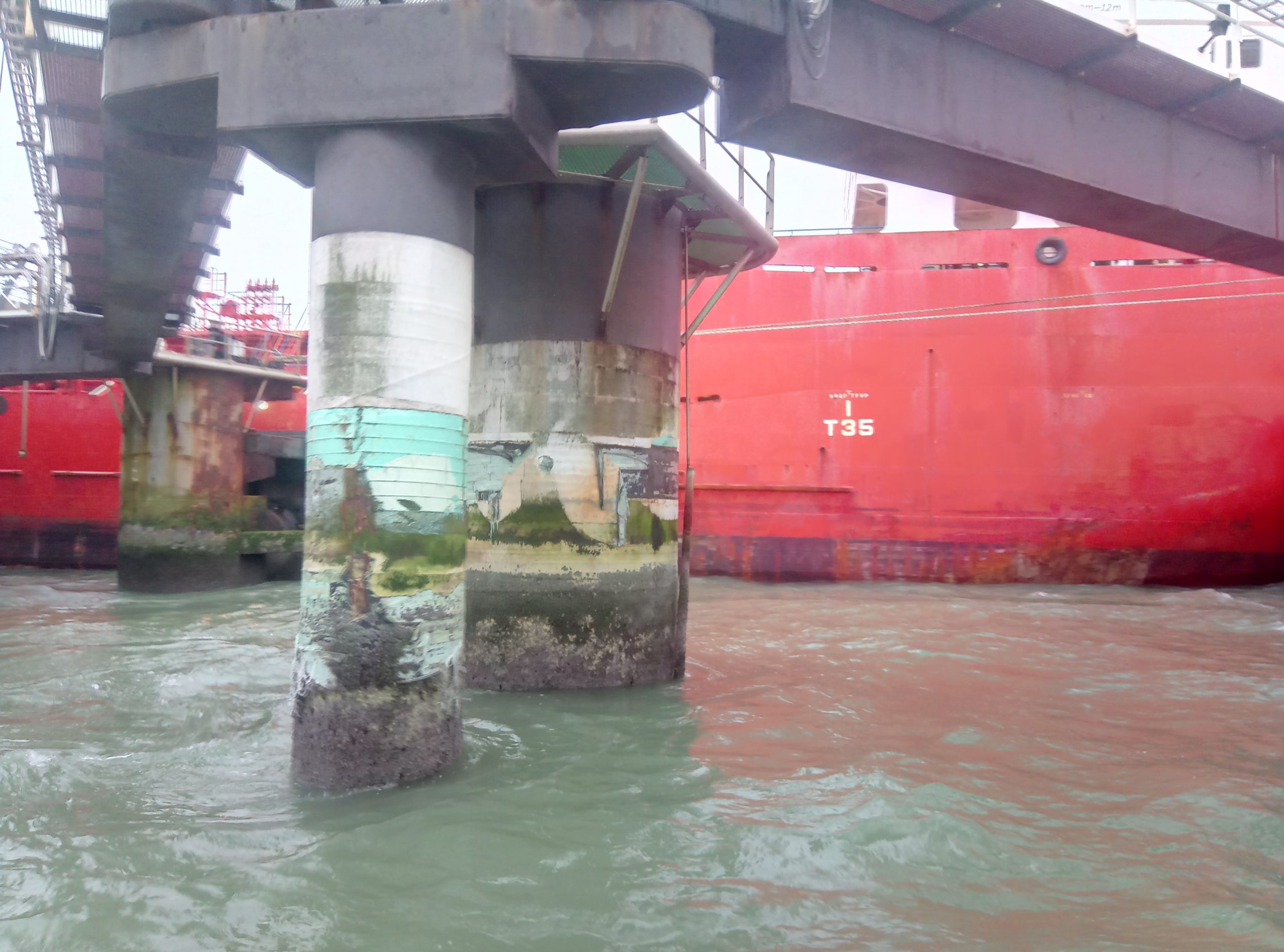
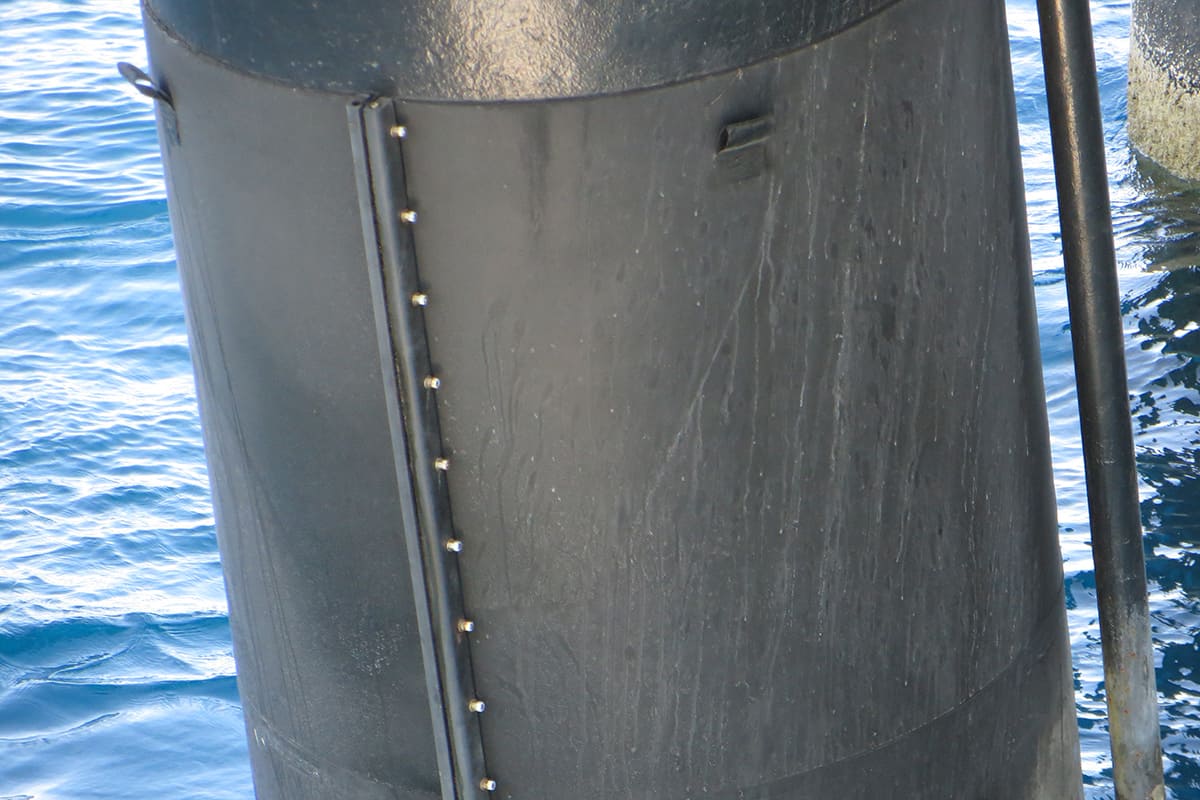
Carmel Corrosion
Carmel Corrosion System, Inc. is a US (Bennington) based manufacturer of a “wrap-around” corrosion protection system specifically designed for easy on-site installation. These wraps are in use on offshore risers and jetty piles around the world.
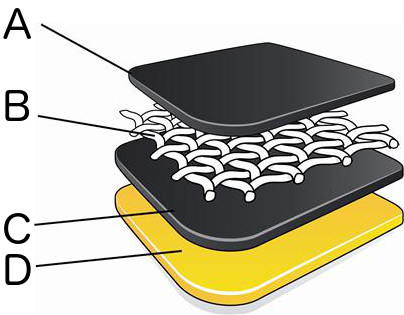 The wrap system is comprised of a memory enhanced polyamid reinforcing scrim (B), embedded in UV stable polyurethane (A+C), to this a polyester felt liner (D) is laminated. Active corrosion inhibitors or biocides are pre-blended into a range of hydrophobic and thixotropic gels. These gels are factory-applied to the absorbent felt inner layer.
The wrap system is comprised of a memory enhanced polyamid reinforcing scrim (B), embedded in UV stable polyurethane (A+C), to this a polyester felt liner (D) is laminated. Active corrosion inhibitors or biocides are pre-blended into a range of hydrophobic and thixotropic gels. These gels are factory-applied to the absorbent felt inner layer.
The edges of the wrap are fitted with a sophisticated flange enabling fast assembly on site and an excellent watertight seal. The system is delivered as one piece requiring only minimal surface preparation before installation. When assembled, the polyurethane scrim combination provides hoop tension creating close association between the corrosion inhibiting gel and the substrate.
Benefits
References
Anode Engineering (Wellington New Zealand), petroleum and gas jetty, 137 piles
Chevron (Singapore), petroleum jetty, 188 piles
Dow Chemicals (Freeport Texas), chemical jetty, 123 piles
Gulf of Mexico, repairs on corrosion affected spots for submerged pipeline
Halifax Port Authority (Canada), harbor pier, 76 piles
- MET Terminal (The Netherlands), petroleum jetty, 205 piles
Motiva Shell (Providence, Rhode Island), petroleum jetty, 421 piles
- MOT terminal (The Netherlands), crude oil jetty, 3 piles
- Shell Europoort (The Netherlands), jetty, 14 piles
St. John’s Port Authority (Canada), harbour pier, 67 piles
The Port Authority of NY & NJ (New York), runway support, 240 piles
